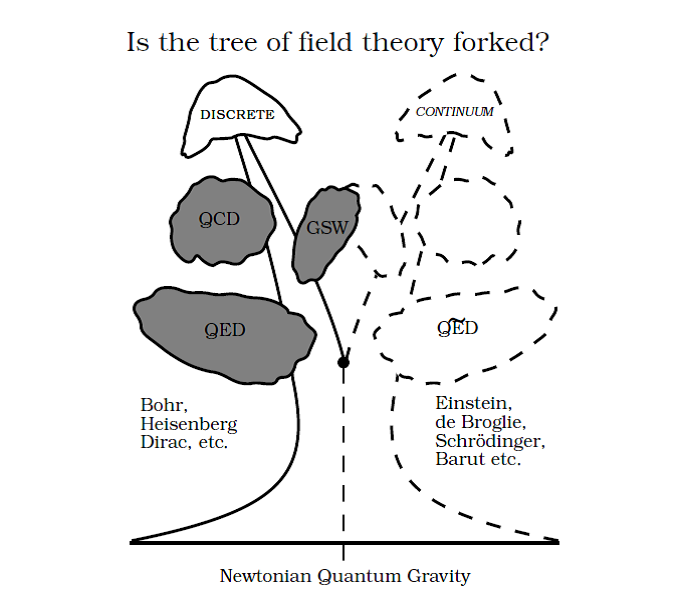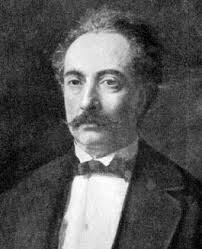
One of the key reasons why I abandoned Academic Physics was the extraordinarily narrow-minded approach of the mainstream to scientific thinking. It was not always so, and certainly it did not feel that way in high school. However, once I got into the post-doctoral game it became clear that the operating ethos was political.
People did not appear to be responding to research results with dispassionate scientific interest. Rather the game had taken on some typical aspects of political economy. Pay attention to the existing structures of power, work out where the dominant economic interest lay and then dutifully do or say anything to support that clique.
This is not a bad way to live and probably quite sensible to build a career and to feed a family. However, it does not seem much like the Scientific Attitude which attracted me to study science as a child. Quite the opposite, it felt exactly like the religious environment of faith that I grew up with as a child. I had rejected Religion at the age of three, and did not want a physics career badly enough to concede defeat at thirty three.
So you proved mathematically that the Copenhagen Interpretation was incomplete? Who cares? We will still think that way because otherwise String Theory would not make any physical sense. We would prefer not to listen and will simply ignore you.
Did we ever get any evidence for String Theory? No! Who cares? You can get public funding to do String Theory so it must be right. In short, the game has become an economically driven contest for survival and not knowledge.
That is okay by the way. It simply means that Academic Science will cease to advance. It becomes a turgid backwater not unlike the Priesthood in Medieval times. In those days, the Monastery was a great storehouse of learning, but it did not really advance knowledge. It simply perpetuated the established and inherited views of classical Greece. The authority of Aristotle dominated and could not be challenged.
I am sure that the Medieval Scriptorium probably had a career structure with something like an H-index. The more you copied, the higher your reputation!
For some odd reason, which I do not comprehend, Western Society seems to have stepped backwards towards this old kind of close-minded perpetuation of established truths and verities. They even had a name for it. When you did an experiment and got exactly what you expected they called it a: Brilliant Confirmation!.
This situation is very odd. Indeed, the contemporary scientific literature is positively bulging with speculative innovations that purport to be new. However, what seems to unite this innovation thrust in physics is an unspoken agreement not to ever try and place any new idea in its proper historical context. Further, the Golden Rule of New Stuff is: don’t be stupid enough to make it testable.
It is okay to plant 10^1000 Angels on sundry pins in 10^500 Universes! However, thou shalt not explore anything testable which contradicts the Copenhagen Canon!
For instance, you find many thinking physicists today happily espousing the Everett theory of Many-Worlds. However, they generally fail to acknowledge that: 1) this is considerably less economical as a theory than the realist view of Erwin Schrödinger; 2) is not testable with any new predictions; and 3) is not robust to any failure of the super-position principle. Put simply: folks are inherently signing up to a world view (a Cosmographia) of positively Byzantine complexity which is:
1) at odds with direct experience (so must be sold as received wisdom)
2) not robust to changing a single assumption (such as relaxing quantum linearity)
3) computationally useless (provides no point of difference or expanded scope)
4) untestable for deviations (makes a real nice Faith but not a good Science)
This type of situation seems symptomatic of our time.
In the unrelenting thirst for Novelty at All Costs we seem to have forgotten the roots of science. As an antidote to this Scientific Rot I composed my own Cosmographical Glass. This diagram is my attempt to sum up the Conundrum of Modern Physics.

In this picture, I display a tree with a forked trunk. On one side, the views handed us by Bohr. On the other side, the views handed us by Schrödinger.
As my Newtonian Quantum Gravity paper showed, these are testably different theories.
The tree metaphor simply records that knowledge builds upon itself. It accretes over time, but must build on solid roots and a firm foundation. However, any student of history should know that the path of history is crooked. The tree is forked because Physics took a turn at the 1927 Solvay conference to socially endorse one true path (that of Bohr). As a result, interest in alternatives fell away and is now treated as a philosophical pursuit.
At one time we believe one thing; at another our view takes a turn on some nuance. The journalistic view of modern times is quite false in its assessments. We are supposed to believe that only the last three minutes matters and that all which came before is usurped in a day. Of course that is nonsense.
In the above diagram, I clearly display a real dichotomy of thought from the last one hundred years. The dichotomy stems from two separate (and ancient) contending views of Nature. Each was present in the Ancient times of Greece. On one view, Nature is discrete and composed of separated and separable pieces, particles, lumps… whatever. In the other view, Nature is continuous and composed of one holistic unity, wave, fluid… whatever. These two views contend today, as they have for 2000 years.
The scientific training of our time is exceedingly poor in that it fails to even acknowledge that such a story can be legitimately told about our understanding of quantum nature. Far worse, the collective progress of the last 87 years since the original papers of Schrödinger seems to be passively ignored, if not actively suppressed.
It is a situation akin to that wonderful poem by Robert Frost: The Road Not Taken. The mainstream has gone one way (Bohr), and I the other (Schrödinger).
Personally, I do not think this state of affairs is malicious. I simply think that humanity went through a major psychological disruption during the last century (World Wars, Atomic Weapons, Biological Weapons etc). This is now coming to a head with the present mass denial of Climate Change Science. It is (as if) the human race considers this moment to be always and perpetually disconnected and special, as though it has no real historical context. Hey, it is all Going up in Smoke so Who the Hell Cares?
Of course, this is a false viewpoint. Every social trend that happens today has occurred before: widespread fraud; banking crises; public distrust of leaders; the disconnect of plutocracy beside poverty; high learning and low conceit. There is nothing new under the sun. The forces of change forever contend with the forces of denial.
However, the Internet is as a force as Big as Gutenberg. That I firmly believe.
A little over a year ago, I dusted off some old scientific work to resurrect a few ideas in blog form. Now, through the power of the internet, I have discovered a community of like minds and a vast repository of search accessible historical literature. This is fantastic for the development of human knowledge.
While the Academy may struggle with the issues of the Medieval Monastery we have Freemen Now! The feudal days of Paying Obeisance to some Liege for Tenure are over forever. The world of Privateer Science is now alive and active with potentially enormous trans-formative economic power.
In the Cosmographic frame, let me fill in the above picture with one closing remark.
The left hand side of the tree is Copenhagen Physics.
The right hand side of the tree is Mongol Physics.
What is Mongol Physics? It is the systematic exploration and development of the un-named, un-explored, un-acknowledged Other Physics that Bohr, Heisenberg, Dirac and others refused to explore. It is what Schrödinger, Einstein, de Broglie, Barut and others thought feasible. It is a continuum field theory based upon a realist interpretation.
It is the knowledge that the Academy refuses to collate, develop, classify and codify.
It is Mongol Physics:
Taking over Physics, one equation at a time!
Saddle up and ride, Nomads. There is a Wide World of Physics to Conquer.

